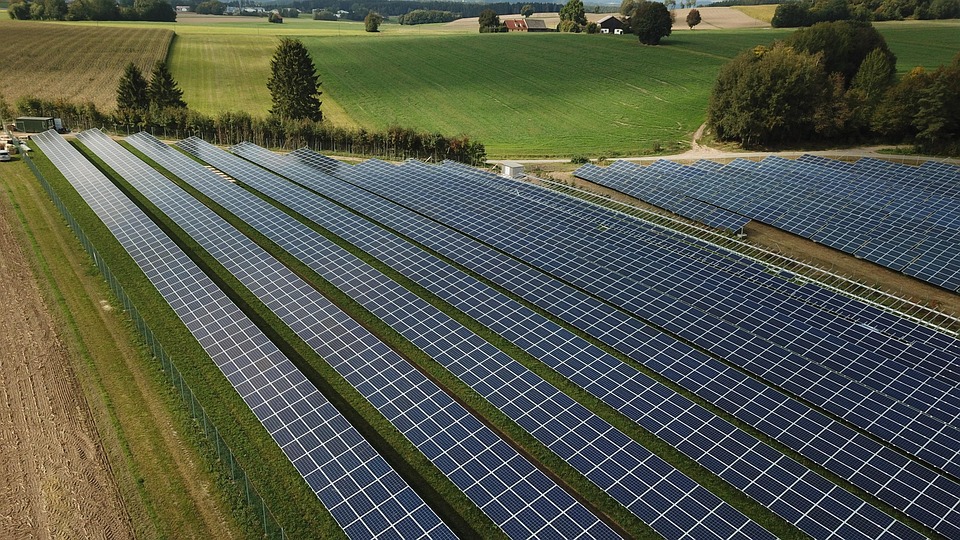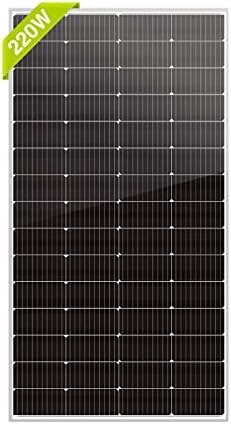# Solar Power: A Sustainable Solution for a Greener Future
I remember the first time I truly realized the beauty and efficiency of solar power. It was a bright summer morning, and the sun streamed through the trees, casting playful shadows on the ground. I had just finished a cup of coffee brewed from beans that had been ground by a hand-cranked grinder, all powered by the very solar panels that adorned my rooftop. As the energy from the sun coursed through my home, I felt an incredible sense of independence and connection to the earth around me. In that moment, surrounded by nature and powered by sunlight, I knew I had found a sustainable solution that was not just good for the planet, but exhilaratingly empowering.
## The Essence of Solar Power
At its core, solar power harnesses the sun’s light and transforms it into electricity. Solar panels, composed of photovoltaic cells, capture sunlight and convert it directly into energy that can be used for various applications—from powering our homes to charging our devices. The remarkable thing about solar energy is that it is renewable, abundant, and available virtually everywhere. Unlike fossil fuels, which can take millions of years to form and can deplete quickly, solar power is just a matter of positioning ourselves to embrace the sun’s rays.
### The Technological Evolution
Solar technology has come a long way since the first photovoltaic cell was developed in the 1950s. Today’s panels are more efficient and affordable than ever, thanks to advancements in technology and a growing demand for sustainable energy sources. Innovations such as bifacial panels, which can capture sunlight from both sides, and solar tiles that mimic the appearance of traditional roofing allow homeowners to make eco-friendly choices without sacrificing aesthetics.
## The Environmental Impact
Switching to solar power can significantly reduce your carbon footprint. Traditional energy sources, particularly those that rely on burning fossil fuels, release greenhouse gases that contribute to climate change. In contrast, solar power generates electricity without emitting harmful pollutants into the atmosphere. According to the U.S. Department of Energy, a typical residential solar panel system can offset about 3 to 4 tons of carbon emissions annually—equivalent to planting over 100 trees!
### Energy Independence and Savings
One of the most attractive benefits of solar power is the potential for energy independence. By generating your own electricity, you become less reliant on the grid and fluctuating energy prices. Additionally, many regions offer tax incentives and rebates for solar installation, helping to offset initial costs. Over time, homeowners can reap substantial savings on their electricity bills. Some even find that their power bills drop to zero or become negligible once their systems are fully operational.
## The Installation Process
Installing a solar power system may seem daunting, but it doesn’t have to be. Here’s a simplified breakdown of how it typically works:
1. **Consultation**: A solar provider will assess your home’s energy needs, roof orientation, and local solar resources. This evaluation helps determine the size and type of system you’ll need.
2. **Design**: Based on the assessment, a customized design is drawn up, factoring in your energy consumption and budget.
3. **Permitting**: Your solar provider will handle the necessary permits, ensuring that everything meets local regulations.
4. **Installation**: Trained technicians will install the panels, inverter, and other components. Most installations can be completed in just one to three days.
5. **Inspection and Activation**: After installation, your system will be inspected to ensure it meets safety standards before being activated.
## Pro Tips for Maximizing Your Solar Experience
1. **Understand Your Energy Needs**: Before going solar, analyze your energy consumption patterns. This knowledge helps you select the right system size and ensures that you’re maximizing your energy efficiency.
2. **Choose the Right Location**: Ensure that solar panels are installed in an area that receives ample sunlight. Trimming nearby trees and ensuring no obstructions will enhance your system’s performance.
3. **Be Mindful of Energy Storage**: Consider investing in solar battery storage systems. This allows homeowners to store excess energy generated during the day for use at night, making your home even more self-sufficient.
4. **Stay Updated on Incentives**: Government incentives for solar installation can change regularly. Stay informed about local rebates and tax credits to optimize your savings.
5. **Maintenance Made Easy**: Solar panels require minimal maintenance. However, keeping them clean and free from debris ensures they function at peak efficiency. A gentle wash once or twice a year can do wonders.
## Overcoming Challenges
While the benefits of solar power are extensive, challenges like initial costs and local regulations can seem daunting. However, many states are seeing an uptick in community solar programs that allow people to benefit from solar power without the need for personal installation. These initiatives enable households to purchase or lease a portion of a larger solar farm, sharing the generated energy and financial benefits.
### Community Solar: A Collective Benefit
Community solar programs provide an excellent option for those who can’t install panels on their roofs due to shading issues, structural concerns, or rental situations. By joining forces with neighbors, participants can easily access affordable solar energy, making sustainability a collective community effort.
## Future of Solar Energy
The future of solar energy looks remarkably bright. Emerging technologies, like solar skins and transparent solar panels, are set to revolutionize how we think about solar adoption. As more individuals, businesses, and governments invest in renewable energy, solar power stands to play a central role in creating a sustainable, greener future.
In addition to traditional solar panels, innovations are focusing on integrating solar technology into everyday materials—think windows that can generate electricity! These advancements will not only enhance the efficiency of solar energy but will also make it even more accessible.
### A Call to Action
The transition to solar power represents an individual and collective commitment to a sustainable future. Each panel installed is not just a step towards energy independence; it is a vibrant vote for a healthier planet. Whether you’re a homeowner, business owner, or just someone interested in fostering a greener lifestyle, now is the time to explore how integrating solar energy can be part of your journey.
Remember the joy of harnessing sunshine? It can be your reality and your contribution to the earth’s future. Let’s set the tone for a greener tomorrow by embracing solar power!
## Conclusion
In a world filled with uncertainty regarding energy sources, solar power stands out as a beacon of hope. It empowers individuals, fosters independence, and creates a sustainable energy solution that benefits everyone. By harnessing the abundant power of the sun, we can collectively work towards a greener future that not only preserves our planet but enhances our lives.
So grab those shades and step into your future with solar power—it’s time to soak up the sun!



